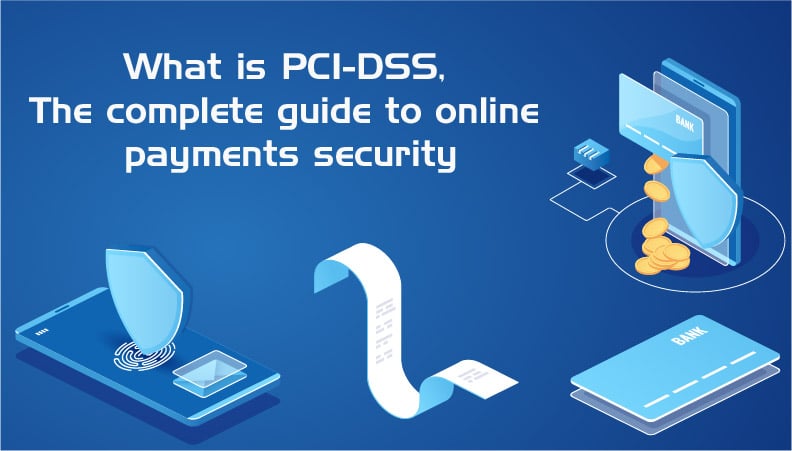What is PCI DSS Certification
The Payment Card Industry Data Security Standard (PCI DSS) is a set of security standards designed to protect sensitive payment card information from theft and fraud.
The PCI DSS certification signifies that an organization adheres to these standards, ensuring the secure handling of cardholder data. Established by the Payment Card Industry Security Standards Council (PCI SSC), PCI DSS applies to any entity that processes, stores, or transmits credit card information.
Why is PCI DSS Certification Required?
PCI DSS certification is required for several key reasons:
- Regulatory Compliance: PCI DSS Compliance is mandatory for organizations handling cardholder data. Major credit card companies require adherence to these standards to maintain a secure payment environment.
- Risk Management: Certification helps organizations mitigate risks associated with data breaches and fraud. By implementing PCI DSS controls, businesses can protect sensitive payment information from unauthorized access.
- Customer Trust: Demonstrating compliance with PCI DSS builds trust with customers, reassuring them that their payment data is handled securely.
- Legal and Financial Repercussions: Non-compliance can lead to hefty fines, legal penalties, and loss of business. PCI DSS certification helps avoid these repercussions by ensuring robust security measures are in place.
11 Steps to Get PCI DSS Certification
- Understand the PCI DSS Requirements: Familiarize yourself with the PCI DSS requirements and how they apply to your business. This involves reviewing the latest PCI DSS guidelines and understanding the specific standards your organization must meet.
- Assess Your Current Security Posture: Conduct a thorough assessment of your current security practices and systems to identify gaps in compliance. This can be done through internal audits or by hiring a Qualified Security Assessor (QSA).
- Develop a Compliance Strategy: Create a detailed plan outlining how your organization will achieve PCI DSS compliance. This includes defining roles, setting deadlines, and allocating resources for the compliance process.
- Implement Security Measures: Based on the PCI DSS Self-Assessment Questionnaire, implement the necessary security controls and measures. This includes securing networks, protecting cardholder data, and maintaining an effective security policy.
- Conduct a Gap Analysis: Perform a gap analysis to evaluate the effectiveness of the implemented security measures. This helps identify any remaining deficiencies and ensures all PCI DSS requirements are met.
- Complete a Self-Assessment Questionnaire (SAQ) or Engage a QSA: Depending on your organization’s size and the nature of cardholder data processing, you may need to complete a Self-Assessment Questionnaire or engage a QSA for a formal assessment.
- Perform Vulnerability Scanning: Conduct regular vulnerability scans to identify and address potential security weaknesses. Scanning should be performed by an Approved Scanning Vendor (ASV) to ensure compliance with PCI DSS requirements.
- Submit the Report on Compliance (ROC): If applicable, compile and submit the Report on Compliance, which documents the results of your PCI DSS assessment. This report is usually prepared by a QSA and submitted to the acquiring bank or payment card brands.
- Address Any Findings: If any issues or non-compliance findings are identified during the assessment, promptly address them. This may involve implementing additional security controls or making necessary adjustments to existing measures.
- Maintain Compliance: PCI DSS compliance is not a one-time effort. Continuously monitor and maintain your security measures to ensure ongoing compliance with PCI DSS requirements.
- Reassess Annually: Conduct annual reassessments to ensure that your organization remains compliant with PCI DSS standards. Regular reviews and updates are crucial for adapting to evolving security threats and regulatory changes.
Read More: Guide to PCI DSS Compliance Checklist
Benefits of Getting PCI Compliance Certification
- Enhanced Security: PCI DSS certification ensures robust security measures are in place, protecting cardholder data from breaches and unauthorized access.
- Reduced Risk of Fraud: By implementing PCI DSS controls, organizations can significantly reduce the risk of payment fraud and data theft.
- Increased Customer Confidence: Certification demonstrates your commitment to data security, fostering trust and confidence among customers.
- Compliance with Industry Standards: Achieving PCI DSS certification aligns your organization with industry standards and requirements, ensuring that you meet the expectations of payment card brands and regulatory bodies.
- Avoidance of Fines and Penalties: Compliance helps avoid costly fines and penalties associated with data breaches and non-compliance.
How Long Does PCI DSS Certification Take?
The time required for PCI DSS certification varies based on the complexity of your organization’s systems and the scope of the certification process. Generally, the process can take anywhere from a few weeks to several months. Key factors influencing the timeline include:
- Current Security Posture: Organizations with existing security measures in place may achieve certification faster than those starting from scratch.
- Size and Scope: Larger organizations or those with complex payment processing environments may require more time for assessment and implementation.
- Preparation and Readiness: Adequate preparation, including gap analysis and remediation, can expedite the certification process.
How Much Does PCI DSS Certification Cost?
The cost of PCI DSS certification depends on various factors, including:
- Organization Size and Complexity: Larger organizations with more complex payment processing systems may incur higher costs due to extensive assessments and remediation efforts.
- Assessment Type: Costs vary depending on whether you complete a Self-Assessment Questionnaire or require a formal assessment by a Qualified Security Assessor (QSA).
- Remediation and Security Improvements: Implementing necessary security controls and addressing gaps can add to the overall cost of achieving compliance.
- Ongoing Maintenance: Annual reassessments and continuous monitoring contribute to ongoing costs.
Overall, organizations should budget for initial certification costs as well as ongoing expenses related to maintaining compliance.
How Do You Demonstrate PCI DSS Certification to Your Customers?
To demonstrate PCI DSS certification to your customers:
- Display Certification Logos: If permitted, display the PCI DSS certification logo on your website or marketing materials. This provides visible proof of your compliance status.
- Provide a Compliance Statement: Share a compliance statement or certificate with customers upon request, confirming that your organization adheres to PCI DSS standards.
- Communicate Security Measures: Highlight your commitment to data security by communicating the steps you have taken to achieve and maintain PCI DSS compliance.
- Engage with Customers: Address customer inquiries regarding your PCI DSS certification and provide reassurance about the security of their payment information.
What’s Next?
Achieving PCI DSS certification is a significant milestone, but maintaining compliance is an ongoing process. Organizations should focus on:
- Regularly Updating Security Measures: Stay informed about updates to PCI DSS standards and adjust your security measures accordingly.
- Continuous Monitoring: Implement continuous monitoring practices to detect and respond to potential security threats.
- Employee Training: Provide regular training for employees on data security best practices and PCI DSS requirements.
- Annual Reassessments: Schedule annual reassessments to ensure ongoing compliance and address any emerging security challenges.
FAQs
1. What is PCI DSS? PCI DSS stands for Payment Card Industry Data Security Standard. It is a set of security standards designed to protect payment card information from theft and fraud.
2. Who needs PCI DSS certification? Any organization that processes, stores, or transmits payment card information needs PCI DSS certification.
3. How often should PCI DSS compliance be reviewed? PCI DSS compliance should be reviewed annually, with regular updates and monitoring throughout the year.
4. What are the consequences of non-compliance? Non-compliance with PCI DSS can result in fines, legal penalties, and damage to your organization’s reputation. It can also increase the risk of data breaches and fraud.
5. Can small businesses get PCI DSS certification? Yes, PCI DSS certification is applicable to businesses of all sizes. Small businesses can complete a Self-Assessment Questionnaire to achieve compliance.


1 Comment
Pingback: What is a PCI DSS Self-Assessment Questionnaire? A Guide